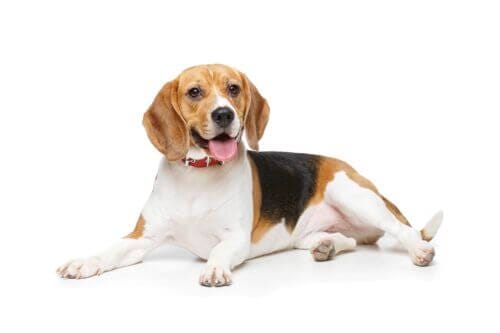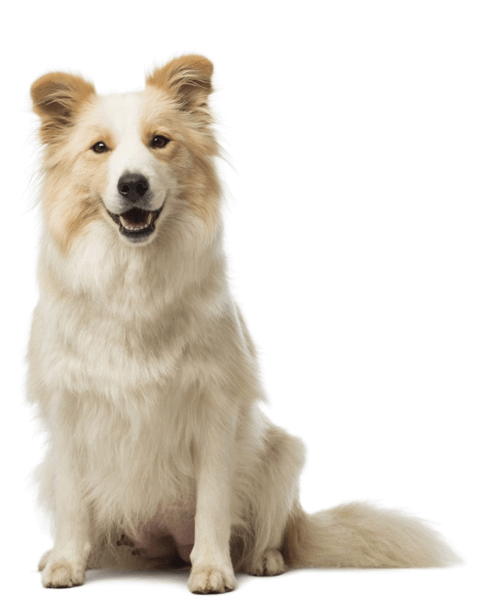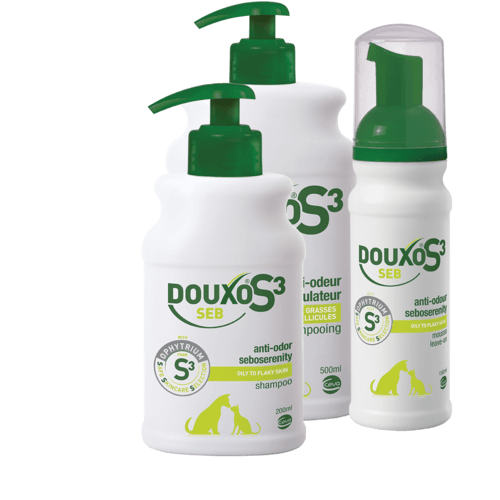How to treat dry skin in dogs
Marina G VeterinarianTreating the cause is the key but can take months. A general treatment regime in addition may help you quickly improve your dog's coat quality.
Dry, flaky skin in your dog comes about from a disruption within their normal cycle of skin regeneration. Under normal circumstances, new cells form to constantly replace dead skin cells. When there’s some type of skin imbalance, this whole process occurs more rapidly, with superficial skin cells peeling off excessively as what we know as dandruff (also known as dry seborrhoea and seborrhoea sicca). There are several different causes of dry skin in dogs, detailed in another article. Here we are discussing what you can put on your dog for dry skin.
Is dry skin on dog serious?
If you are concerned about your dog’s health, it is always important to seek advice from a veterinary surgeon. Dry, flaky, itchy skin can be a mild and common complaint that can be treated at home, but there are more concerning causes, so a trip to the vets to rule out anything which needs further treatment is recommended. If you notice any areas of skin that are red, sore, scabbing, oozing discharge or very itchy, it is especially important to seek expert advice. Untreated skin conditions can swiftly become more serious, so it is best to be cautious. Your vet may recommend some tests, such as skin scrapings or blood tests, to check for parasites, allergies and other medical conditions.
Hopefully, the more serious causes of dry skin can be ruled out and your vet will be able to recommend a management protocol at home, such as using topical products. Treatment will, of course, be dependent on the cause.
General treatment regime for dogs with dry skin
You can help your dog dry skin with just easy actions, in addition to treating the cause:
Regular application of topical products
Topical products have the clear advantage of bringing the necessary ingredients directly to where needed. Products such as the DOUXO® S3 SEB line are specially formulated to reduce excess sebum and dandruff due to the action of Seboliance, a natural extract. In addition, these products strengthen the skin barrier, maintain proper skin hydration and prevent bacterial and fungal overgrowth. The regime involves first shampooing and then mousse application every 48-72 hours.
Maintain a good grooming regime
Regular brushing helps remove dead skin particles from your dog’s coat, and also distributes the skin’s natural oils evenly across the body. Keeping their coat matt-free and aerated also keeps the air around the skin fresh and less prone to bacterial and fungal infections
Dietary supplements
If your dog suffers with dry, itchy skin, it’s important to ensure your dog has a diet high in omega-3 essential fatty acids and Vitamin E. These are necessary components to healthy skin cell formation and should keep your dog’s skin and coat healthy and glossy.
Treating a known cause of dry skin
Excessive dandruff indicates the likelihood of an underlying cause for your dog’s dry skin. Your vet is your main ally in identifying the cause and recommending the most appropriate treatment.
Causes and treatments include:
External parasites
Where external parasites such as fleas or mites are causing skin problems, treating the problem and then maintaining regular, preventative parasite control is key. It’s important to treat all animals in the household and the environment too.
Allergies – food and environmental
Your vet will work with you to determine the allergen; either a protein in your dog’s food, or an environmental allergen (such as pollens, grasses etc.) In both cases, avoiding the allergen where possible is important to prevent flare-ups; with food allergies this means feeding only ‘safe’ foods, and with environmental allergies, avoiding the allergen as much as possible. Further treatment may be indicated, such as itch relief through topical products +/- drugs or immunotherapy. Instigating a general dandruff treatment regime in addition will benefit your dog.
Skin infections
Bacterial skin infections (pyoderma) or yeast infections (Malassezia) can cause dry, flaky skin. Once the type of infection is established, your vet will prescribe relevant topical antiseptic +/- oral treatments.
Endocrine disorders
Certain endocrine diseases in dogs, such as hypothyroidism and Cushing’s disease, can cause dry, flaky skin. Once diagnosed via blood tests, your vet will start treatment for the disease and in addition to this, your dog may benefit from a more general dandruff treatment regime.
Environmental factors
Where the issue lies in the environment, such as dry air, using a humidifier in addition to the general treatment regime can greatly help your dog.
Excessive bathing with inappropriate shampoo
Too many baths with products not adapted to dogs can strip the natural oils from your dog’s skin, leaving it dry and irritated. Human shampoos are also not suitable for dogs and can dry out the skin.
Poor diet
Healthy skin requires plentiful good quality ingredients, including essential fatty acids. Lesser quality diets can be lacking in these, which over time can lead to gradually reducing skin health. Other factors can affect absorption of nutrients, such as pregnancy, lactation and worm burdens. If you would like to discuss your dog’s diet, speak to your veterinary surgeon.
Primary seborrhoea
If secondary causes are ruled out, your dog is likely to be suffering from primary seborrhoea, a congenital disorder seen in certain breeds such as Springer Spaniels, Basset Hounds, Labradors, Golden Retrievers, American Bulldogs, Jack Russell Terriers, Cocker Spaniels, Westies, Doberman Pinschers, Dachshunds, Shar Peis and German Shepherds. In these cases, maintaining skin health with the general dandruff treatment regime is indicated.
We recommend
Our solution for oily to flaky skin
DOUXO® S3 SEB helps reduce dandruff, excess sebum and unpleasant odours, while hydrating and strengthening the skin’s ecosystem.





